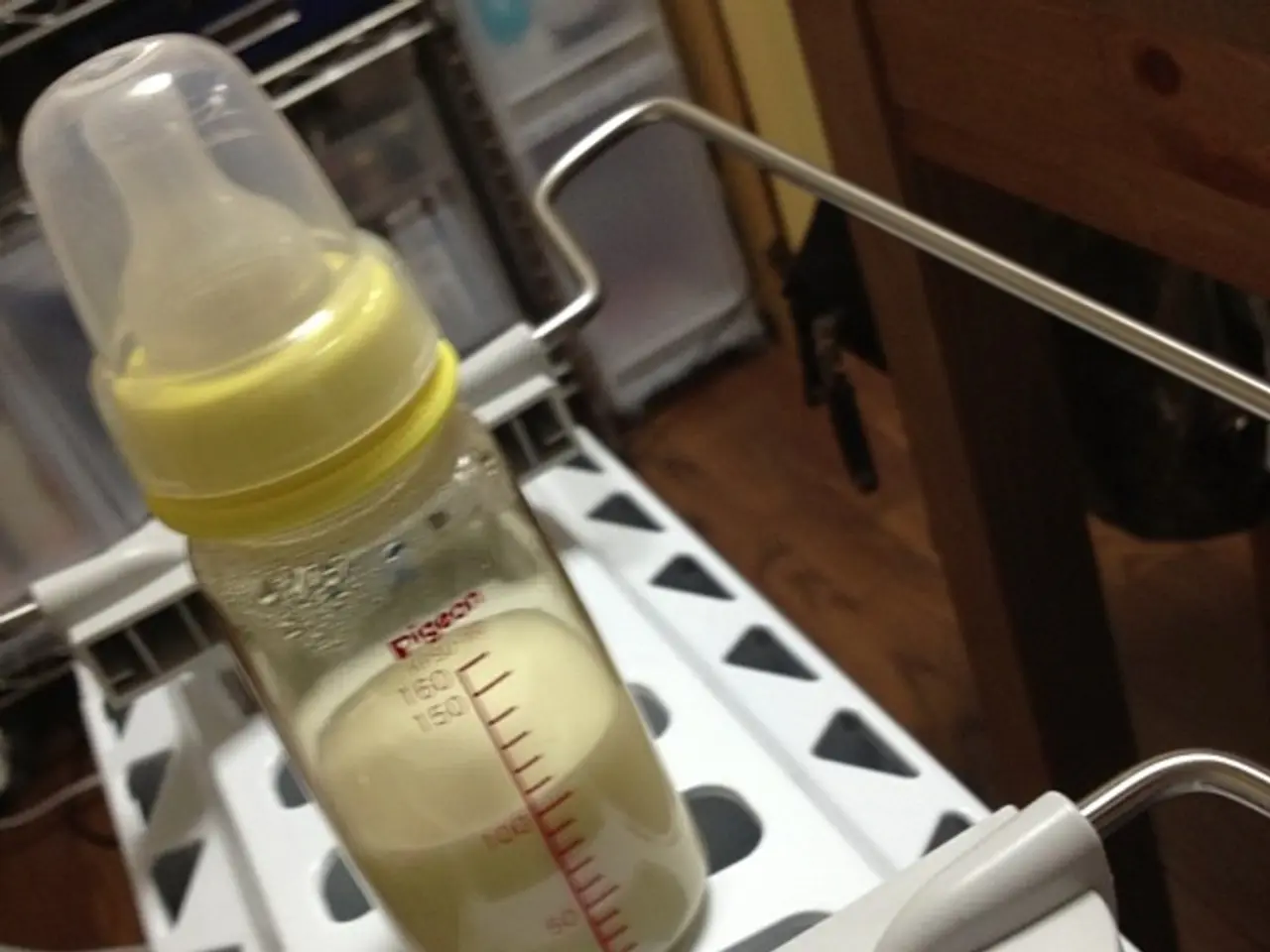Breast Milk Contents: Nicotine Exposure Duration and Beyond
In the journey of motherhood, breastfeeding is a crucial step for both the mother and baby. However, for nursing mothers who are also smokers or use nicotine in other forms, there are significant risks to consider.
Nicotine, an addictive chemical present in tobacco and smoking products like e-cigarettes and vapes, remains in breast milk for several hours. With a half-life that can range from about 1 to 4 hours, nicotine can be detected in breast milk well into hours after smoking or nicotine exposure [5].
This ongoing nicotine intake through breast milk carries documented risks to infant health and breastfeeding success. Nicotine accumulates in breast milk at levels more than double those transferred via the placenta during pregnancy, leading to significant infant exposure [1][3]. This exposure can alter infant behavior, such as increased colic and crying, which may contribute to early weaning [1][3].
Smoking more than 10 cigarettes per day decreases milk production and changes milk composition, reducing breast milk quality [1][3]. Moreover, nicotine exposure via lactation has potential harmful effects on infant development, including possible alterations in craniofacial growth and lasting effects on developing tissues, based on experimental data [2].
The use of smokeless tobacco during breastfeeding also reduces breast milk’s protective quality, increasing the risk of respiratory and thyroid-related issues in infants [4].
Quitting nicotine while breastfeeding can be challenging, but switching from cigarettes to nicotine replacement products such as gum or nasal sprays can help reduce the risk to the baby. The United Kingdom baby charity La Leche League advises nursing individuals who want to quit to find other ways to relax, visit non-smoking places, and spend time with supportive parents.
It is important to note that breast milk is the most suitable food for babies in the first year of life because it contains all the nutrients they need to grow healthy and strong. However, when nicotine is present, it can interrupt a baby's sleep patterns and increase the risk of childhood blood sugar and thyroid problems.
Avoiding smoking is the best way to protect breast milk from nicotine. Stopping smoking is the best way to protect babies from nicotine and other smoking-related chemicals. Mothers are encouraged to never smoke while feeding their baby, never smoke near the baby, keep the home and car smoke-free, leave as long as possible between smoking and nursing, wash their hands and change their clothes after smoking, and pick up the baby.
Second-hand smoke also exposes babies to these harmful chemicals. It is crucial to create a smoke-free environment for the baby's health and wellbeing.
In summary, the risks of using nicotine while breastfeeding are significant and include decreased milk production, altered infant behavior, potential harmful effects on infant development, and increased risk of respiratory and thyroid-related issues in infants. Mothers are encouraged to avoid nicotine during breastfeeding to protect infant development and milk quality [1][2][3][4][5].
References:
[1] American Academy of Pediatrics. (2018). Breastfeeding and the Use of Human Milk. Pediatrics, 141(3), e20180922.
[2] American Academy of Pediatrics. (2018). Nicotine Exposure and Infant Development. Pediatrics, 141(3), e20180922.
[3] Centers for Disease Control and Prevention. (2019). Breastfeeding and Tobacco Use. Retrieved from https://www.cdc.gov/breastfeeding/breastfeeding-special-circumstances/tobacco-use/index.htm
[4] La Leche League International. (2019). Smoking and Breastfeeding. Retrieved from https://www.llli.org/breastfeeding-info/smoking-breastfeeding/
[5] March of Dimes. (2019). Breastfeeding and Nicotine. Retrieved from https://www.marchofdimes.org/pregnancy/breastfeeding-and-nicotine.aspx
- For mothers who are breastfeeding and also smokers, it's important to understand that nicotine can be detrimental to both their health and their baby's, as it remains in breast milk for several hours with a half-life that ranges from about 1 to 4 hours.
- Exposure to nicotine via breastmilk can lead to significant risks for infant health and breastfeeding success, with documented risks including altered infant behavior, increased colic, and changes in milk production.
- Additionally, continued exposure to nicotine during breastfeeding can have potential harmful effects on infant development, such as alterations in craniofacial growth and lasting effects on developing tissues.
- To protect their infant's health and wellness, mothers who want to quit smoking while breastfeeding may find switching to nicotine replacement products such as gum or nasal sprays helpful in reducing the risk to their baby.
- Creating a smoke-free environment is crucial for the baby's health and mental-health, including avoiding second-hand smoke and setting a good example for future parenting.




